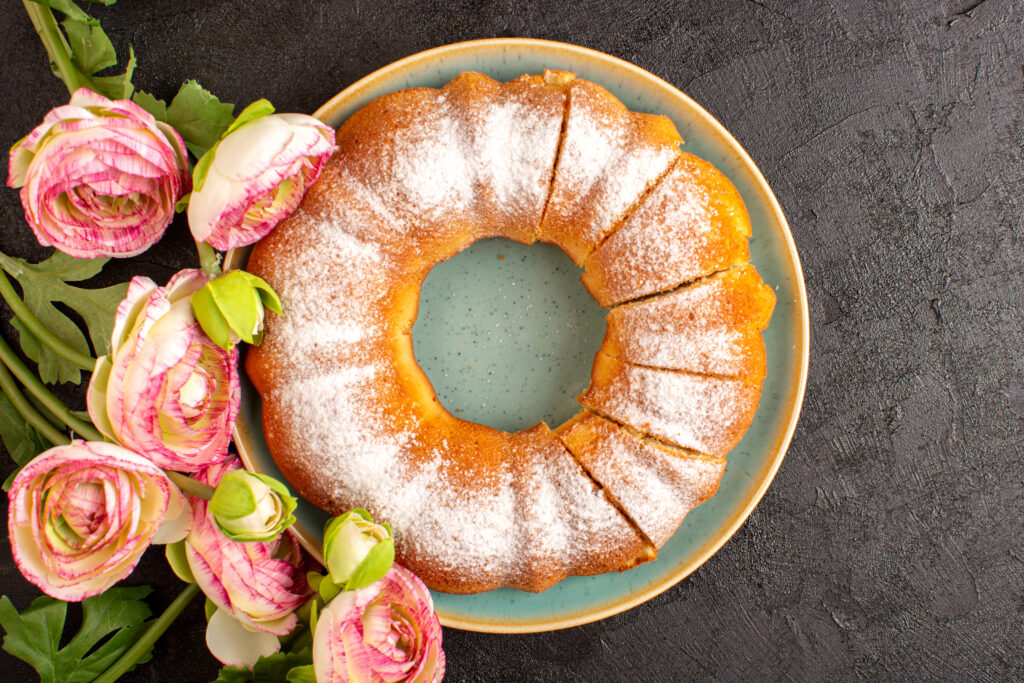
Sift the icing sugar and I place in a small bowl. Stir in the plain flour until evenly mixed.

Put the egg whites, cream of tartar, vanilla essence, salt and almond essence in a large howl and whisk with an electric mixer or rotary whisk until stiff peaks form.

Add the flour and sugar mixture about a quarter at a time and fold in lightly with a spatula or metal spoon until blended. Whisk in the caster sugar a little at a time and continue whisking until smooth and glossy and stiff peaks form again.
Pour into an ungreased 20.5-cm (8-in) ring tin and cut through the mixture with a knife to break any air bubbles.
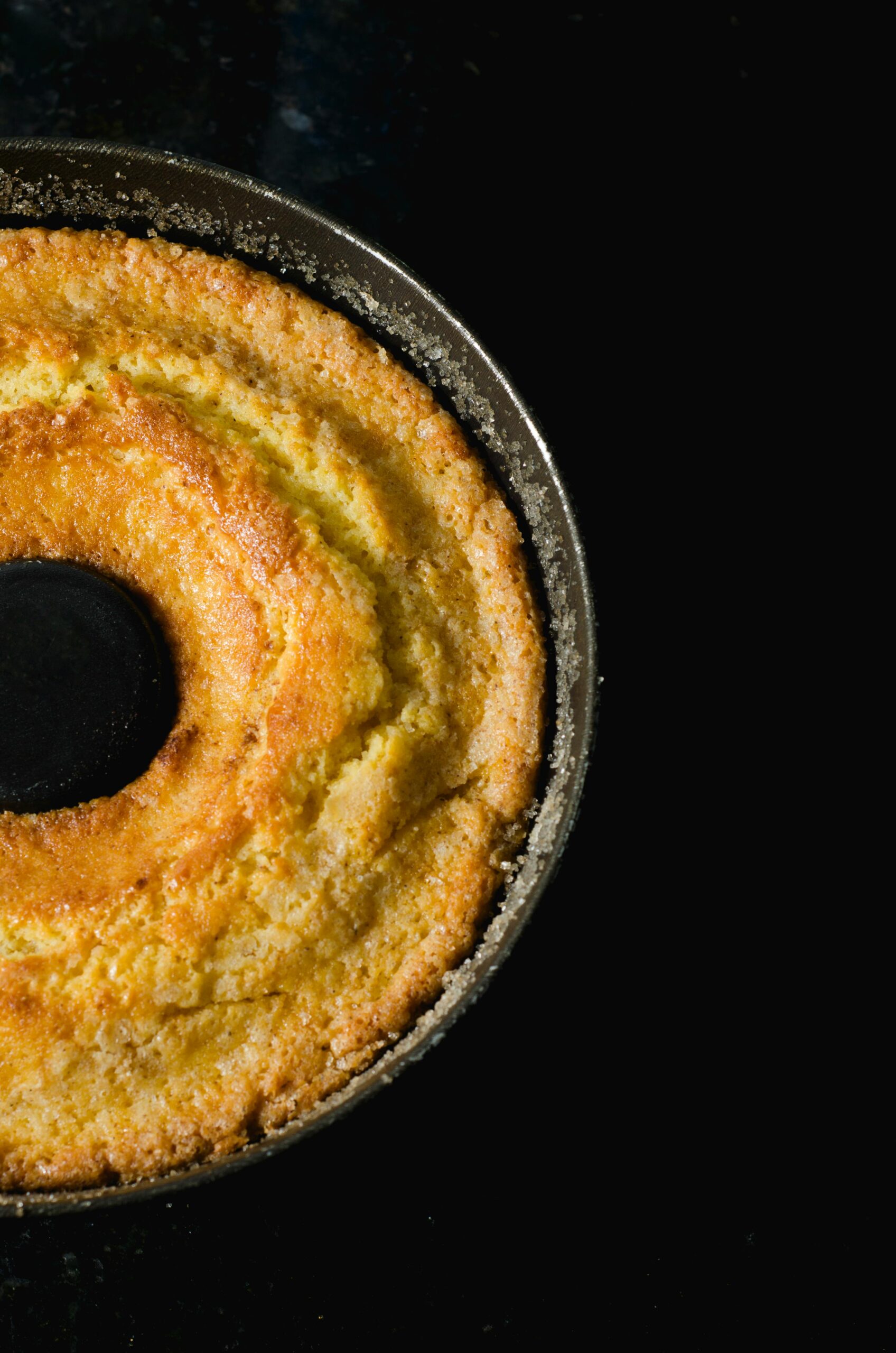
Bake at 190°C (375°F) mark 5 for about 45 minutes, until the top springs back when lightly touched with your finger.
To cool, invert the tin on to a funnel, bottle neck or wire rack. When cold, loosen with a knife and turn out.
Helpful tips you may need
This section will provide helpful tips for baking a perfect round dessert cake. These tips include using a kitchen scale to measure ingredients, bringing all ingredients to room temperature before starting, preheating your oven at least 15 minutes before baking, and baking cakes in the center of the oven for even heat distribution.
Another helpful tip is to measure ingredients accurately. A kitchen scale is the most precise tool for measuring ingredients, ensuring the correct proportions for a successful cake. If a kitchen scale is unavailable, use measuring cups and spoons, leveling off dry ingredients to avoid overpacking.
Bringing all ingredients to room temperature before starting is crucial for even blending and cake texture. Cold ingredients can cause the batter to curdle or separate, affecting the cake's consistency. Take ingredients out of the refrigerator at least 30 minutes before baking to allow them to reach room temperature.
Preheating the oven at least 15 minutes before baking is essential for temperature accuracy. Ovens can take time to reach the desired temperature, and starting with a preheated oven ensures consistent baking. Avoid opening the oven door during baking, as this can cause temperature fluctuations and affect the cake's rise.
Lastly, bake cakes in the center of the oven for even heat distribution. The center of the oven provides the most consistent temperature, ensuring the cake bakes evenly on all sides. Avoid placing the cake pan too close to the oven walls, as this can cause uneven browning.
Substitutions/Variations
Crafting Round Dessert Cakes: A Beginner's Guide' will delve into the exciting realm of experimenting with different ingredients and flavors to create unique and delectable round dessert cakes. While the provided recipe serves as a solid foundation, this section will empower bakers to unleash their creativity and explore a myriad of possibilities.
One delightful variation involves substituting all-purpose flour with almond flour, resulting in a moist and nutty cake with a delightful texture. Alternatively, for a gluten-free option, bakers can opt for a blend of gluten-free flours, ensuring that everyone can indulge in the sweet delight.
Sugar lovers can rejoice as they discover the versatility of sweeteners in cake baking. Granulated sugar remains the classic choice, providing a familiar sweetness. However, for a richer flavor profile, brown sugar can be introduced, imparting a subtle caramel note. Coconut sugar, with its unrefined sweetness and hint of caramel, adds a touch of tropical charm. Agave nectar, with its delicate sweetness and low glycemic index, caters to those seeking a healthier alternative.
Milk, the essential liquid component, offers an array of possibilities. Whole milk provides a rich and creamy texture, while skim milk offers a lighter option. For a dairy-free alternative, almond milk or oat milk can be employed, each imparting its distinct flavor and nutritional benefits.
Extracts, the aromatic essences, serve as flavor enhancers in cake baking. Vanilla extract remains the timeless favorite, adding a touch of warmth and familiarity. However, adventurous bakers can explore the tantalizing world of other extracts, such as almond, orange, or lemon, to infuse their cakes with unique flavor dimensions.
Mix-ins, the delightful inclusions, add textural interest and bursts of flavor. Chocolate chips, the perennial favorite, can be replaced with chopped nuts, dried fruits, or even crushed candy bars, transforming a classic cake into a personalized masterpiece.
With a wealth of substitutions and variations at their fingertips, bakers can embark on a culinary adventure, crafting round dessert cakes that reflect their creativity and preferences. Each variation promises a unique sensory experience, turning ordinary cakes into extraordinary culinary delights.
Equipments you may need
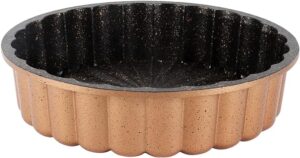
Serenk Fun Cooking Star Bundt Cake Pan. Get it HERE.
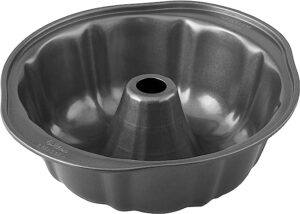
Wilton Round Cake Nonstick get it HERE.
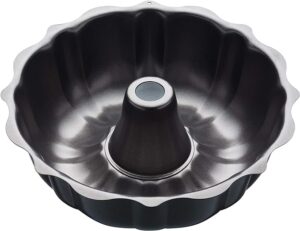
MasterClass Non-Stick you can get it HERE.
